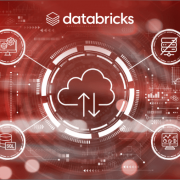With the increase in data and a rapidly changing technology landscape, business leaders today face challenges controlling costs, fulfilling skill gaps for employees, supporting systems and users, evaluating future strategies, and focusing on modernization projects.
Here we discuss six reasons why organizations are embracing managed analytic solutions that rely on experts to build, operate, and manage their data and analytics services. These are based on the recurring themes which we have observed and experienced while working with our customers.
- Keep costs low: Total cost of ownership for running and maintaining D&A systems has several cost elements like staff costs, operational costs, software + infrastructure costs, and (intangible) opportunity costs like technical debt and avoidable heavy lifting. While cutting costs in the short term may lead to some immediate gains, cost effectiveness in the long term and on a sustainable basis is the end goal. The right way to approach and achieve guaranteed, predictable cost savings is through a potent combination of automation, talent, and process improvements.
- Improve system stability and reliability: Missing SLAs, performance issues, frequent and persistent downtimes, and an inability to comply with regulatory requirements are the usual suspects when it comes to areas giving sleepless nights to leaders navigating enterprise data and analytics (D&A) systems. Improving system stability and reliability requires long term planning and investments in areas like modernization of D&A systems, data quality initiatives under a larger data governance program, RCA with feedback, 360-degree monitoring and pro-active alerting.
- Intelligent D&A operations: You may want to drive operational efficiency by reducing the piling automation debt, bringing in data-driven intelligence (and human ingenuity) to achieve AI-driven autonomous and real-time decision making, better customer experience and as a result superior business outcomes. An example would be on demand elasticity (auto scaling) to scale-up the processing power of your D&A systems, based on forecasted demand due to seasonality in the business based on past trends.
- Focus on core business objectives: You may need to focus on your core business objectives and not get stuck in the daily hassles of incident management and fire-fighting production issues. We have seen that reducing avoidable intervention from your side becomes difficult, especially when you are managing it in-house or using a managed services vendor operating with rigid SLAs. A recommended approach would be to engage with a trusted advisor to figure out the right operating model for managed services with shared accountability and define service level outcomes. This will enable you to devote attention to more innovation focused and value-added activities which drive business results.
- Get the expertise you need: Given multiple moving parts involved in successfully running D&A systems, and the sheer flux of technological changes, your business needs the ability to tap into a talent pool easily, and on-demand. If executed well, this does wonders to your capabilities in managing D&A systems and achieving desired business outcomes.
- Improve user experience: This is the most important and yet often the most neglected aspect in a lot of cases. In the context of managed services, an elevated user experience entails data literacy, ability to leverage tools to the fullest, clarity on SLAs and processes, trust in data quality, ability to derive value from analytic systems and hence adoption.
Infocepts Managed Services solution helps organizations achieve one or more of these motivations. We help drive digital transformation, handle legacy systems, reduce costs, enhance innovation through operational excellence, and support scaling of business platforms and applications to meet growing business needs. You can rely on our D&A experience and expertise to build, operate, and run analytic systems which help to drive outcomes quickly, flexibly, and with reduced risk.
Get in touch to know more!
Recent Blogs

What Retail Media Can Learn from Instacart’s AI Strategy
June 24, 2025

Beyond Chatbots: How Agentic AI Is Automating High-Stakes Business Decisions
June 11, 2025

From Batch to Real-Time: The Future of Data Distribution Using Databricks Delta Sharing
June 4, 2025

Accelerating Databricks Serverless Adoption with Agentic AI & Proven Practices
May 29, 2025


